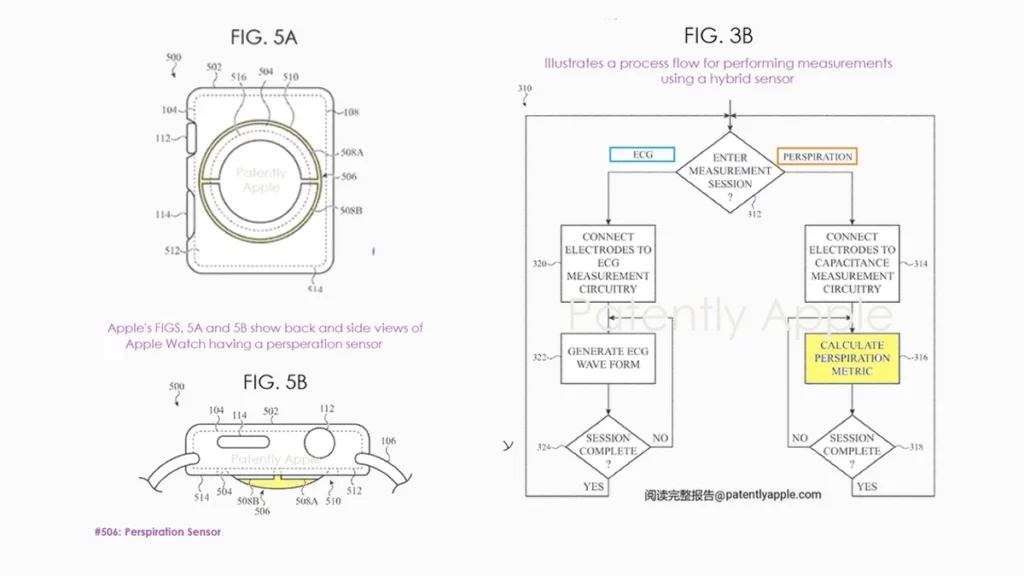The top-of-the-line Apple Watches already excel at monitoring various health metrics like blood oxygen levels, calorie expenditure, and physical activity. However, Apple is exploring new territory with a recent patent application aimed at adding another dimension to its wearable technology.
As reported by Patently Apple, the tech giant has filed a patent application with the US Patent and Trademark Office for a system to measure a user’s sweat level using electrodes beneath the device. This concept is reminiscent of the existing ECG (echocardiogram) feature introduced with the Apple Watch Series 4. While the patent is pending approval, it’s anticipated that this technology could track sweat rates to aid in managing hydration levels during workouts.

The ability to quantify and assess perspiration represents a novel metric for even the most advanced smartwatches and fitness trackers. It opens up a range of potential applications, although it also presents challenges, such as how the device would function in rainy conditions or during swimming activities. Currently, there’s no indication that it can measure sweat salt content or other hydration-related biomarkers.
An earlier report from Patently Apple in August 2021 suggested that this feature could operate continuously, similar to a SpO2 monitor, implying that the Apple Watch might track hydration levels even outside of exercise sessions. This notion is reiterated in the latest patent application.
It’s important to recognize that many patented ideas never materialize into actual products, as companies often seek to protect their innovations regardless of whether they come to fruition.

While sweat tracking is a relatively recent development in wearable technology, Apple’s potential implementation of this feature on its smartwatch would represent a notable advancement. Although there are existing sweat patches and biosensors capable of tracking perspiration, integrating this capability directly into the Apple Watch would require new on-device mechanisms. Ensuring accuracy in sweat tracking poses challenges, particularly in adverse weather conditions, but the potential applications for such data are extensive. In addition to aiding in hydration management during workouts, sweat analysis could eventually contribute to health monitoring for conditions like blood sugar levels and disease detection.





